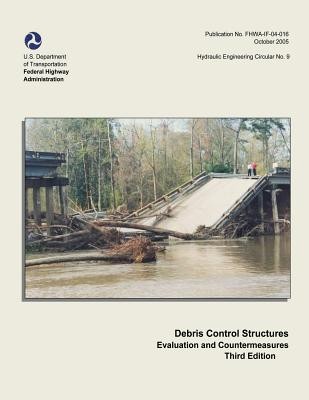
- We will send in 10–14 business days.
- Author: Federal Highway Administration
- Publisher: CreateSpace Independent Publishing Platform
- Year: 2015
- Pages: 182
- ISBN-10: 1508680574
- ISBN-13: 9781508680574
- Format: 21.6 x 28 x 1 cm, softcover
- Language: English
- SAVE -10% with code: EXTRA
Debris Control Structures - Evaluation and Countermeasures (e-book) (used book) | bookbook.eu
Reviews
Description
Debris accumulation at culvert and bridge structures openings is a widespread problem. The accumulation of debris at inlets of highway culverts and bridge structures is a frequent cause of unsatisfactory performance and malfunction. This accumulation may result in erosion at culvert entrances, overtopping and failure of roadway embankments and damage to adjacent properties, increased local scour at piers and/or abutments, and the formation of pressure flow scour. Consideration of debris accumulations and the need for debris-control structures should be an essential part of the design of all drainage structures. Structural and non-structural measures have been used effectively to prevent or reduce the size of debris accumulations at bridges and culverts. Structural measures can include features that: (a) intercept debris at or upstream of a structure inlet; (b) deflect debris near the inlet; or (c) orient the debris to facilitate passage of the debris through the structure. Non-structural measures include management of the upstream watershed and maintenance. This publication provides measures for both culvert and bridge structures. The measures available for culverts are based on the information included in earlier editions of this manual. Selection of a certain debris countermeasure depends upon the size, quantity, and type of debris, the potential hazard to life and property, the costs involved, and the maintenance proposed.
EXTRA 10 % discount with code: EXTRA
The promotion ends in 19d.23:11:36
The discount code is valid when purchasing from 10 €. Discounts do not stack.
- Author: Federal Highway Administration
- Publisher: CreateSpace Independent Publishing Platform
- Year: 2015
- Pages: 182
- ISBN-10: 1508680574
- ISBN-13: 9781508680574
- Format: 21.6 x 28 x 1 cm, softcover
- Language: English English
Debris accumulation at culvert and bridge structures openings is a widespread problem. The accumulation of debris at inlets of highway culverts and bridge structures is a frequent cause of unsatisfactory performance and malfunction. This accumulation may result in erosion at culvert entrances, overtopping and failure of roadway embankments and damage to adjacent properties, increased local scour at piers and/or abutments, and the formation of pressure flow scour. Consideration of debris accumulations and the need for debris-control structures should be an essential part of the design of all drainage structures. Structural and non-structural measures have been used effectively to prevent or reduce the size of debris accumulations at bridges and culverts. Structural measures can include features that: (a) intercept debris at or upstream of a structure inlet; (b) deflect debris near the inlet; or (c) orient the debris to facilitate passage of the debris through the structure. Non-structural measures include management of the upstream watershed and maintenance. This publication provides measures for both culvert and bridge structures. The measures available for culverts are based on the information included in earlier editions of this manual. Selection of a certain debris countermeasure depends upon the size, quantity, and type of debris, the potential hazard to life and property, the costs involved, and the maintenance proposed.


Reviews